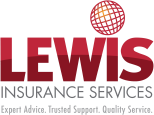Workplace Risk Management – Protecting You and Your Business
For most businesses, workers’ compensation premiums can be one of their largest insurance costs. Many organisations are not aware that this cost to their business can be controlled and reduced with strategic premium, claims, injury and risk management practices.
To achieve cost reductions, organisations must strive for a safety management system with the principal goal of preventing incidents and injuries in the first instance.
Companies do this through:
- Strong WHS Governance: setting up strong health and safety governance mechanisms that include the establishment of measureable objectives, targets and reporting frameworks for accountability;
- Safety Leadership and Mentoring: Developing and mentoring its managers and supervisors to be safety leaders to enable a culture of zero injuries; and
- Policy and Procedures: Ensuring company and industry-specific health and safety practices and procedures are enforced consistently.
If incidents do take place, however, early intervention, injury management and stringent and timely claims management are key in mitigating costs and delivering best outcomes for the injured worker and for the organization.
During a recent National Workers’ Compensation Summit in Melbourne over February, participants heard that Allianz Australia and the NSW Department of Premier and Cabinet, along with other parties, conducted a trial that incorporated “behavioural insight” initiatives and resulted in faster return to work rates.
Behavioural insights draw on research in behaviour psychology and neuroscience to understand how people behaved and made decisions.
Allianz Australia Treasury Managed Fund general manager Julie Mitchell reported that “the overarching objective of the project was to apply behavioural insight techniques into the first 30 days of a claim… [and] understand the key activities which occur in that period, particularly the touch point with the worker.”
Conducted between August 2013 and June 2014 and involving more than 1700 injured workers, the trial found that among those whose claims lasted up to 90 days, participants returned to work 27 per cent faster than those in a control group.
Of those whose claims lasted up to 150 days, participants returned to work 17 per cent faster than control-group workers. The trial also showed that participants’ injury claims were three times more likely to finalise in the first 30 days, which was reported as an unexpected result.
Key initiatives included:
1. Improved Worker Communication: Redesigning correspondence language to the worker that previously did not always highlight the key messages that were important in the early stage of their recovery, amended to make them more encouraging and included a reduction in the legislative jargon used.
2. Removing Duplication of Communication: Removal of correspondence duplication (e.g. employer and insurer) by removing three standard letters that were sent to injured workers in the first month of their claim; and
3. Medical Provider Communication: Phone calls were replaced with a single teleconference conducted within the first five days of a claim between the insurer, the employer and the doctor.
Mitchell reported “this was promoted as an easy and attractive option for the doctor, again reducing that hassle factor and time spent communicating between parties, prompting faster resolution to avoid lengthy to and from between the parties.”
Behavioural insight initiatives may be applied to any employer’s injury management strategy, but also consider, do you:
- Have strong relationships with preferred local medical providers that understand your workplace and are committed to assisting with timely and durable return to work?
- Attend the initial medical appointment with the injured worker and provide the treater(s) with adequate information to make a decision regarding suitable duties and capacity for work?
- Offer suitable duties to all workers that sustained an injury at work to reduce the time they spend off work?
- Know who your Workcover Insurer/Agent is and manage that relationship to ensure the best liability and claims outcomes.
Lewis Insurance Services works closely with IA Risk Services (a division of Insurance Advisernet Australia Pty Ltd) who are specialists in all aspects of Workplace Risk Management. Together, we work with organisations of diverse sizes and across a broad spread of industry to assist with developing and implementing safety management systems to prevent injuries.
If injuries do happen, we can assist with managing them practically, efficiently and cost-effectively. Our goal is to identify and address our clients’ needs and work closely with our clients to deliver a client advocate model of service delivery.
For any advice or further information, please call us on 07 3217 9015 or email info@lewisinsurance.com.au
We thank Damien Stinson from IA Risk Services for his assistance in writing this article.
